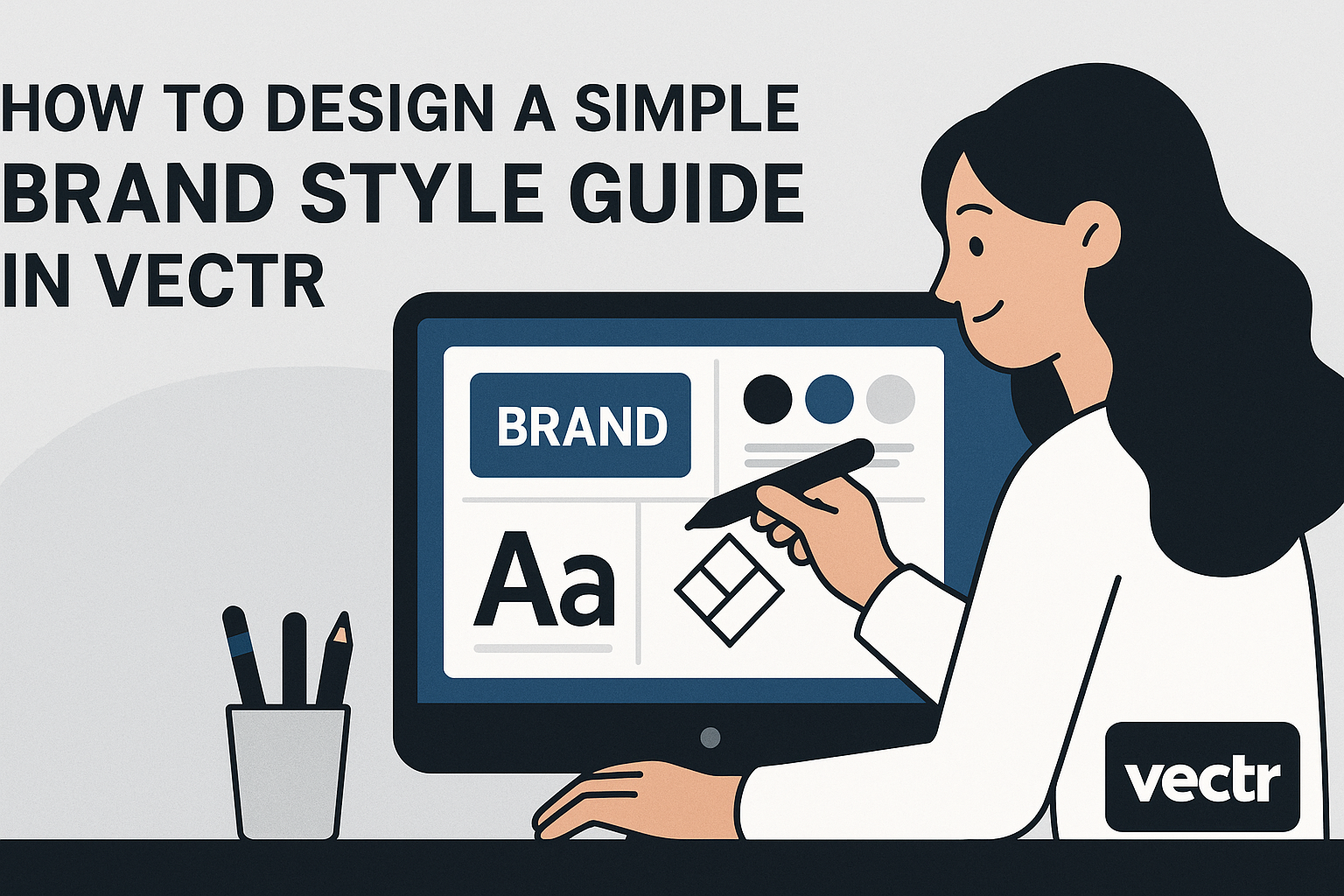Creating a brand style guide can feel overwhelming, but it doesn’t have to be.
A simple guide is a powerful tool that helps keep a brand’s voice and visuals consistent across all platforms.
Using Vectr, anyone can design an effective brand style guide without needing advanced design skills.
Vectr offers an easy-to-use interface that allows users to create professional-looking documents.
By focusing on essential elements like logo usage, color palettes, and typography, they can effectively capture the essence of their brand.
This guide will walk you through the steps to make a straightforward brand style guide in Vectr that reflects unique brand identity. With the right approach, anyone can showcase their brand’s personality and values effectively.
Getting Started with Vectr
Vectr is a user-friendly design tool that helps users create stunning graphics.
To make the most of Vectr, it’s essential to set up an account and learn how to navigate its interface effectively.
Setting Up Your Vectr Account
To start using Vectr, the first step is to create an account.
Users can sign up for free using their email address or by connecting through Google or Facebook. This quick process allows access to the software on web and desktop platforms, including Mac, Windows, Linux, and Chromebook.
After signing up, users can choose to work directly in a web browser or download the desktop version for offline use. Once logged in, they have access to design tools and can begin creating.
It’s important to explore the initial setup options, like saving projects automatically and syncing across devices.
Navigating the Vectr Interface
The Vectr interface is designed to be intuitive.
At the top, users will find the main menu with options for creating new projects, saving files, and accessing tutorials.
On the left side, there is a toolbar with essential tools for shapes, text, and icons.
Users can click on each tool to select and customize their designs.
The right side offers properties and layer settings, allowing adjustments to colors, sizes, and positions.
Navigating these elements can feel easy, making the design process enjoyable. Users can always access helpful tutorials within the interface for additional guidance.
Essentials of Brand Design
Brand design involves key components that help communicate a company’s identity. Focusing on color schemes, typography, and icons can create a strong visual impact for any brand.
Understanding Color Schemes
Color schemes are crucial in setting the mood and tone of a brand. Each color evokes different feelings and associations. For example, blue often conveys trust and professionalism, while yellow can symbolize happiness and energy.
When creating a color palette, it’s best to choose a primary color and complement it with 2-3 secondary colors. This approach ensures clarity and consistency across various platforms.
Tools like Adobe Color can be helpful in selecting harmonious color combinations.
It’s also important to think about accessibility. Contrast ratios matter for readability.
Ensure that the colors chosen support a positive user experience and aren’t just visually pleasing.
Choosing Typography
Typography plays a major role in brand recognition. The right font can enhance brand personality and readability. Sans-serif fonts often appear modern and clean, while serif fonts may suggest elegance and tradition.
When selecting fonts, limit choices to 2-3 styles to maintain uniformity.
It’s helpful to choose one font for headings and another for body text. This distinction aids in clear communication and helps guide the reader’s eye.
Keep in mind legibility. Avoid overly decorative fonts that can become hard to read, especially at smaller sizes.
Testing fonts in different formats can help find the best fit for the brand.
Using Icons and Shapes
Icons and shapes add visual interest to a brand’s design. They can simplify complex ideas and enhance understanding. Clean, simple icons are often more effective than intricate designs.
Shapes can also convey meaning. For instance, circles often represent unity and harmony, while sharp angles may suggest innovation. Using a consistent style across all icons helps reinforce the brand’s message.
Consider the brand’s audience when choosing icons and shapes. They should resonate and connect with the target demographic. Incorporating feedback during the design process can ensure the final visuals truly represent the brand’s identity.
Creating Your Brand Style Guide
A brand style guide is essential for maintaining consistency in branding. It includes key guidelines for logos, colors, fonts, and other elements that define a brand’s visual identity.
Defining Brand Guidelines
To start, it’s important to outline the core brand values and mission. This establishes a foundation for the style guide. Clear guidelines will help in maintaining a consistent look across all platforms.
Brand Elements to Include:
- Mission Statement: A brief description of what the brand stands for.
- Target Audience: Who the brand aims to serve.
- Tone and Voice: The style in which the brand communicates with its audience.
These elements will guide all design choices, ensuring they align with the brand’s identity.
Incorporating Brand Elements
Next, incorporate specific brand elements into the style guide. This includes creating a logo guidelines section.
Clearly outline acceptable logo variations, sizes, and placement.
Key Visual Elements:
- Color Palette: List primary and secondary colors with HEX or RGB codes.
- Typography: Specify font styles, sizes, and weights. Include alternatives if needed.
- Imagery Style: Define the type of images that reflect the brand. This can include photography styles or particular illustrations.
By setting these parameters, it becomes easier to maintain a cohesive look.
Exporting Your Design
Once the components are defined, it’s time to export the style guide.
Choose the right format to make it accessible for team members and stakeholders. Common formats include PDF and online documents.
Make sure to include:
- Instructions for Use: How to apply the style guide in various contexts.
- Templates: Provide standard templates for presentations, social media, and marketing materials.
This ensures everyone involved has the tools they need to adhere to the brand guidelines.

